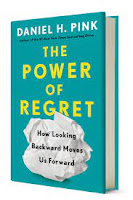“The concert pianist is part of an intense triangle between composer, performer, and listener. Take away the audience, however, and the pianist playing alone at home is still part of an intense conversation with the composer… Composer and pianist may never meet, or even live in the same historical era, but their hopes are invested in one another. That is a rewarding relationship which for many pianists is one of the most enduring in their lives.”
What does this have to do with leadership? Deeper leadership strives to create something of shared value and benefit and the greatest hope a leader has is that there will be some lasting impact, or legacy. Music is one of the most profound metaphors for, and examples of, deeper leadership because the listener, or indeed the musician performing, has complete choice as to whether they will engage. Only if stuck in an elevator for a few minutes listening to corporate mood music are we forced to listen. The rest of what we hear or play is choice. Thus, the composer knows that to communicate s/he must create something that is either so pleasurable that we want to hear it or a message so compelling that we can’t not hear it.
Susan Tomes’ The Piano – A History in 100 Pieces (2021/22) covers two hundred years of piano music. Readers who will most enjoy the book have played, or at least heard, a breadth of compositions across this repertoire. I was delighted that many of the pieces that I regularly play were referenced and further explained by her.
The keyboards that pre-dated the piano (piano forte) were strung and played in very different ways – plucking a string by depressing a key rather than a hammer striking a string (this is why the piano is classified as a percussion instrument). The shift to hammered piano resulted in much greater range in volume, the ability to sustain the ringing of a string, as well as more complicated compositions in general. It is for this reason that I mostly play compositions from the Classical era forward and I favor Romantic, late Romantic, and early 20th century music.
Beethoven (1770-1827) dominated both playing and composing in the early 19th century. Although of common birth he declared “’My nobility is here and here,’ striking his head and his heart” (locator 1016). This view took the status of musicians to a new level, equating it with the inherited privilege by birth granted to the titled nobility of the day. The nobility of Beethoven’s music includes simplicity as well as improvisations that border on “controlled hysteria” (locator 1091). One of his compositions, the “Moonlight Sonata” moves from a quiet, somber, and controlled movement to one of exuberance and then a last movement of frantic runs at a tempo that some might consider hysterical. Chopin (1810-1849) was a prolific composer focusing almost entirely on the piano with 200+ compositions for solo piano. These vary across pieces that can be played by a novice all the way up to some of the most challenging pieces in the piano repertoire. Some of my most pleasurable moments at the piano are with Chopin’s Nocturnes, the Fantasie-Impromptu, and the Etude in E.
Early 20th century music is really my home and is the period of music I most often play on a daily basis. Each of the following composers capture the evolution of musical ideas over time and culture. Norwegian pianist and composer Edvard Grieg (1843-1907) incorporated folk tunes into his only piano concerto, one of the most loved of the repertoire. Grieg and Jean Sibelius (1865-1957) were part of a Scandinavian movement that celebrated nature and revived mythical stories to help shape the national identities of Norway and Finland. The melodic lines in Gabriel Faure’s (1845-1924) music often incorporated mediaeval purity, inspiring his students to include graceful lines into the emerging “Impressionism” common among French composers. Claude Debussy (1862-1918) and Maurice Ravel (1875-1937) incorporated Faure’s purity of melody as they explored greater complexity, often informed by the precision of math in both melody and harmonic tone. Ravel even incorporated American jazz elements after he fell in love with the complex chords and “blue notes” prominently used by George Gershwin (1898-1937) and jazz greats such as Duke Ellington. Russian Romanticism reached its peak in Sergei Rachmaninoff’s (1873-1943) compositions, with the chromaticism that is so evident in “Impressionism” creating some of the most beautiful melodies ever written. Rachmaninoff’s permanent departure after the Russian Revolution likely increased his influence in Europe and in America where lush melodies in movie themes became the vogue of the 1930s and 40s.
Tomes laments in her concluding chapter that “Many people now get their exposure to classical music through film and television” (locator 5565) or in stadium concerts of popular performers. On the positive side she goes on to say that “piano music is in a phase of democratisation, opening itself to influences and philosophies which have particular meaning for our era” (locator 5648), a trend that proves that all music, and especially piano music, must incorporate a wide range of ideas and influences. In essence, this range reflects a collective human treasure that is constantly changing, modulating, and incorporating new cultures and ideas. Music in general, and piano repertoire in particular, personify leadership as we have now come to understand it in the 21st century – an interpersonal encounter that seeks to engage others, and through building relationships, seeks to honor various human experiences and conditions in creating a more understandable, connected and beautiful world.







